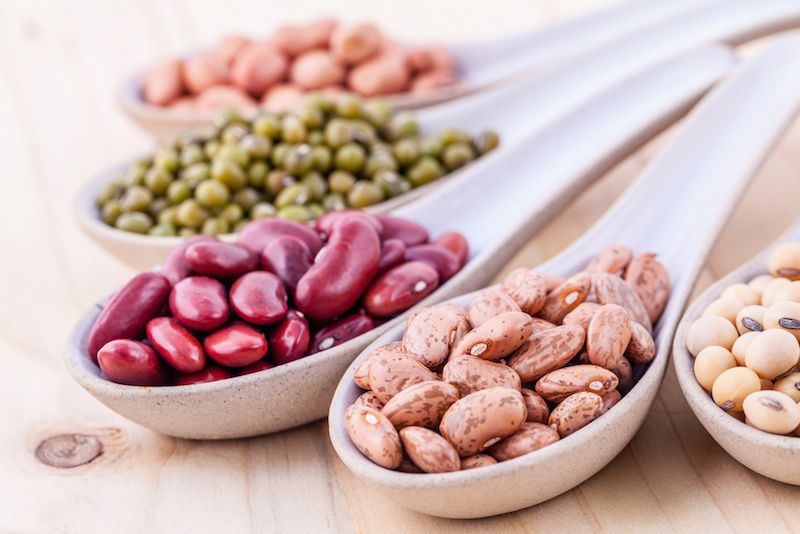Fighting Hunger? Plant Protein May Keep You Feeling Full Longer than Meat

Eating plant protein may help keep you feeling full longer — and help you eat less at your next meal — than eating animal protein, a new study suggests.
In the study, 43 young men in Denmark ate three different breakfast meals, on three different days, each two weeks apart. The meals varied in the protein patty and mash that was included: The first included a high-protein meat patty and a potato mash, the second had a high-protein patty that was made from legumes (a plant group that includes beans and lentils) and a split pea mash, and the third had a low-protein legume patty with a combination split pea and potato mash. The researchers found that the men reported feeling fuller, and less hungry, after they ate the high-protein legume patty meal than they did after eating the other two meals.
Even more surprisingly, while the participants rated the high-protein vegetable patty meal as the most filling, they also said that the low-protein vegetable patty meal was just as filling as the high-protein meat patty meal, said Anne Raben, the study's senior author and a professor of obesity research at the University of Copenhagen. [The Science of Hunger: How to Control It and Fight Cravings]
The researchers also found that after the participants consumed the high-protein legume patty meal for breakfast, they consumed 12 to 13 percent fewer calories at lunch than when they consumed either a high-protein meat patty meal or the low-protein legume patty meal at breakfast — a difference of 95 to 105 calories, Raben told Live Science.
All meals consisted of oven-baked patties, either of veal, pork and potatoes (the high-protein meat patty); fava beans and split peas (the high-protein legume patty); or fava beans, split peas and potatoes (the low-protein legume patty). All patties included a variety of spices, rapeseed oil and butter.
In both the high-protein meat patty and the high-protein legume patty, 19 percent of the calories came from protein, while 53 percent of the calories came from carbohydrates. Where the high-protein patties differed, however, was in the amount of fiber each had: The high-protein meat patty had only 6 grams of fiber per 100 grams, while the high-protein legume patty had 25 grams of fiber per 100 grams.
In the low-protein legume patty, on the other hand, only 9 percent of the calories came from protein, while 62 percent came from carbs. That patty had 10 grams of fiber per 100 grams. [Which Types of Food Are the Most Filling?]
Sign up for the Live Science daily newsletter now
Get the world’s most fascinating discoveries delivered straight to your inbox.
The higher amount of fiber in the high-protein legume patty may have contributed to the higher levels of satiety, or fullness, that the participants felt compared to when they consumed the high-protein meat patty, according to the findings, published Oct. 19 in the journal Food and Nutrition Research.
"Fiber and protein act through different mechanisms," Raben told Live Science. The body does not break down fiber, so it remains in the gastrointestinal tract until it passes out of the body. But protein is digested and absorbed into the body, so that its components can be used by body tissues, including the brain.
The researchers noted that the results do not necessarily mean that eating vegetable protein will always lead people to feel more satiated than eating animal protein. "Testing meals with both similar fiber and protein content could be useful," Raben said.
One limitation of the study was the difference in the taste of the meals: The participants said that the high-protein legume patty was significantly less tasty than both the high-protein meat patty and the low-protein legume patty. This is important, because in general, tastier foods are considered to be less filling than foods that are not as tasty, which may have affected the study's results, the researchers said.
The study is the first, the researchers said, to directly compare the effects on appetite regulation of vegetable meals that are based on beans and peas to animal meals that are based on pork and veal. Similar studies have compared soy and dairy proteins (in the form of whey, casein and milk), or have used food substitutes (such as dissolved protein powder in water) instead of real foods as their test meals.
The researchers are interested in the environmental implications of such findings. Raben said that from "a global perspective, it would be more ecological to choose the more vegetable-based approach" to eating.
Originally published on Live Science.
Most Popular

